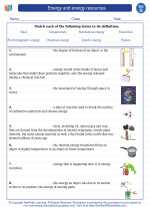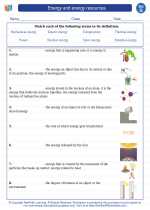Oscillatory Motion
Oscillatory motion is a type of repetitive motion in which an object moves back and forth around a central point. This type of motion can be seen in various phenomena, from the swinging of a pendulum to the vibration of a guitar string. Understanding the principles of oscillatory motion is important in fields such as physics, engineering, and even biology.
Key Concepts
There are several key concepts to understand when studying oscillatory motion:
- Period: The time it takes for one complete cycle of oscillation. It is denoted by the symbol T.
- Frequency: The number of complete cycles of oscillation that occur in one second. It is denoted by the symbol f and measured in hertz (Hz).
- Amplitude: The maximum displacement of the oscillating object from its central position.
- Simple Harmonic Motion (SHM): A special type of oscillatory motion where the acceleration of the object is directly proportional to its displacement from the central point and is always directed towards the central point.
- Periodic Function: A function that repeats its values in regular intervals. Oscillatory motion can be described using periodic functions such as sine and cosine.
Examples of Oscillatory Motion
There are numerous examples of oscillatory motion in the natural world and in man-made systems:
- Swinging of a pendulum
- Vibration of a guitar string
- Motion of a mass on a spring
- Waves in water
- Vibrations of atoms in a solid material
Mathematical Representation
Oscillatory motion can be described mathematically using trigonometric functions such as sine and cosine. The displacement of the oscillating object at any given time t can be represented by the equation:
\[ x(t) = A \cdot \sin(2\pi ft + \phi) \]Where: - \( A \) = Amplitude of the oscillation - \( f \) = Frequency of the oscillation - \( t \) = Time - \( \phi \) = Phase angleStudy Guide
When studying oscillatory motion, it's important to focus on the following areas:
- Understanding the definitions of period, frequency, and amplitude, and knowing how to calculate these quantities for a given oscillatory system.
- Recognizing examples of oscillatory motion in everyday life and understanding the underlying physics principles behind them.
- Being able to solve problems involving simple harmonic motion and periodic functions.
- Understanding the connection between oscillatory motion and trigonometric functions, and being able to interpret and manipulate oscillatory motion equations.
- Exploring real-world applications of oscillatory motion in various fields, such as engineering, physics, and biology.






